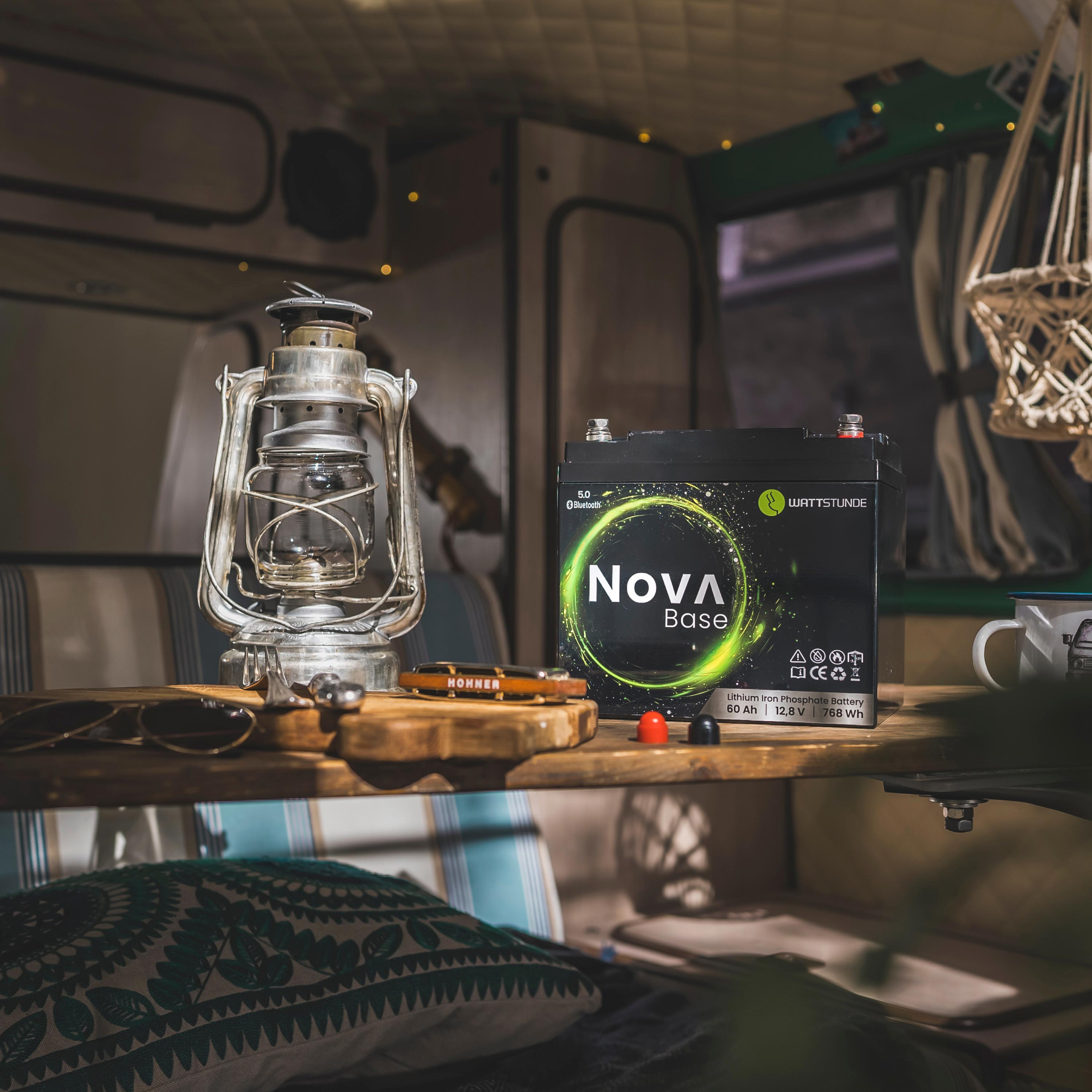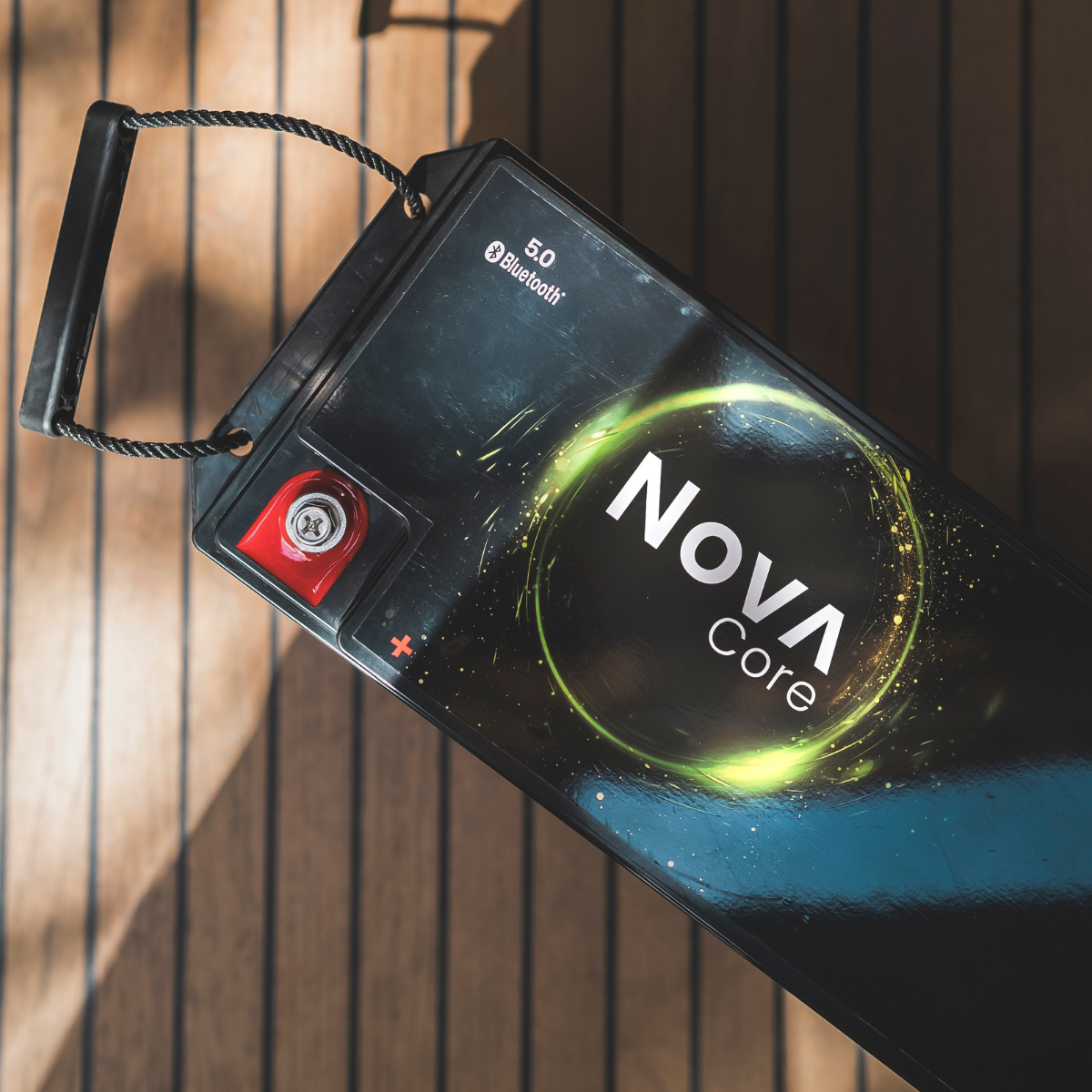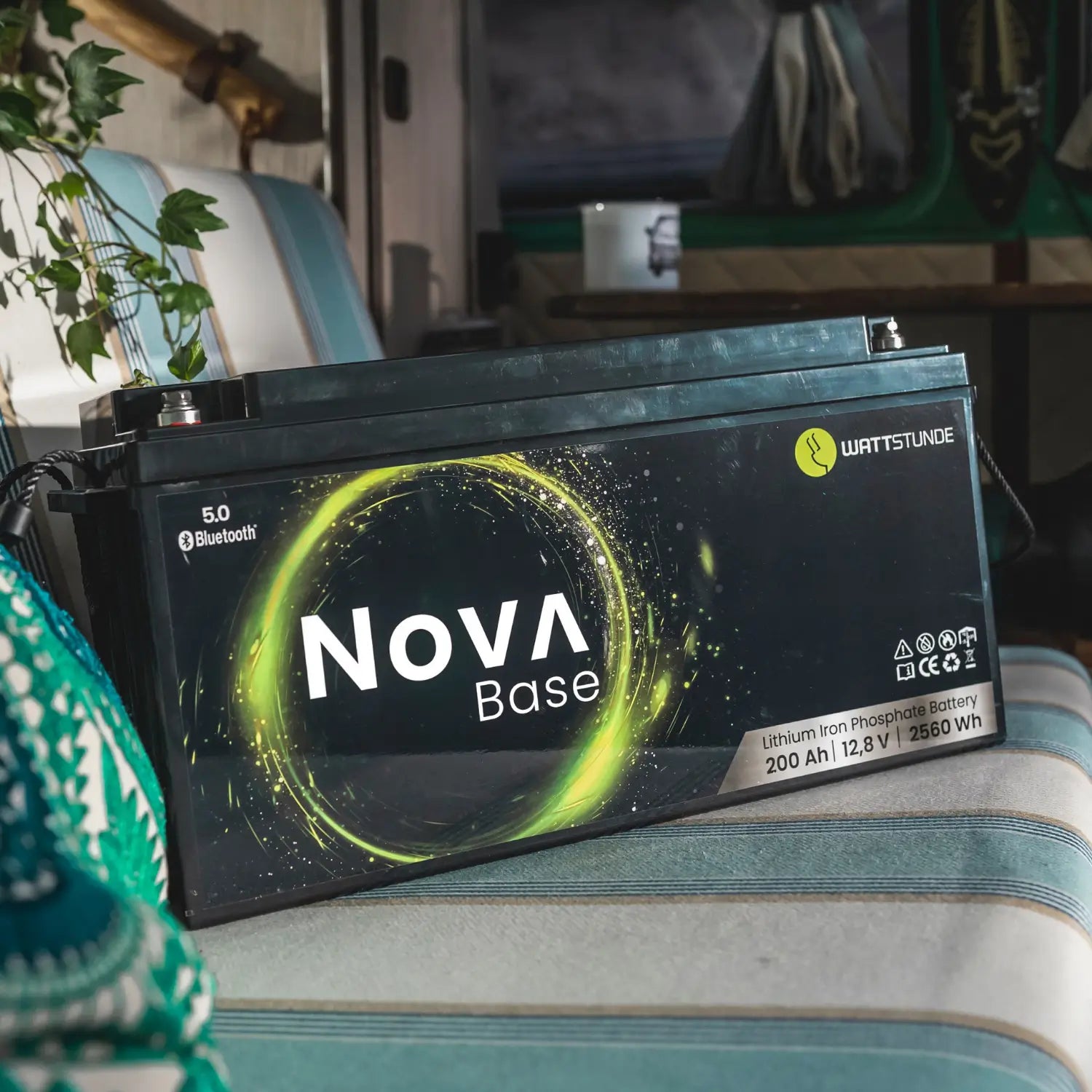In the first part of our blog series, we discussed the basics of off-grid power supply. Now we'll talk about... The heart of your energy system: the supply battery. It stores the energy you need on the go and ensures you have a reliable power supply even when you're away from home, independent of external power sources. But Which battery best suits your needs? Which capacity Do you need it? And how can you get it? Want to maximize your battery's lifespan? You'll learn all about that in this part of our blog series.
Battery types compared - AGM, Gel or Lithium.
Not all batteries are created equal! Depending on the application, there are different technologies that vary in performance, lifespan, and weight. Here are the three most common battery types:
AGM batteries – The robust classic
AGM (Absorbent Glass Mat) batteries are widely used and offer a good balance between price and performance. They are maintenance-free and, due to their sealed design, can also be used indoors.
✅ Robust & leak-proof
✅ Average lifespan (~600-800 charging cycles)
❌ Not deep discharge tolerant
❌ Heavy & large
Gel batteries – Long-lasting, but slow
Gel batteries use a gel-like electrolyte, making them particularly durable and robust. They tolerate deep discharges better than AGM batteries, but take longer to charge.
✅ Long lifespan (~800-1200 charging cycles)
✅ Highly resistant to deep discharge
❌ Slow charging speed
❌ Heavier & more expensive than AGM
Lithium batteries (LiFePO4) – The best choice for self-sufficiency
Lithium iron phosphate (LiFePO4) batteries are the most modern and efficient choice. They are lighter, charge faster, and offer a much longer lifespan than AGM or gel batteries. Furthermore, they are virtually maintenance-free and retain their performance even at low temperatures (some NOVA models are equipped with heating mats for this purpose).
Another advantage is their high usable capacity: While AGM and gel batteries can only utilize about 50% of their capacity, lithium batteries can be discharged up to 90% without significantly impacting their lifespan. They also have an integrated battery management system (BMS) that prevents overcharging, deep discharge, and excessive currents.
✅ High cycle stability (~3000-5000 charging cycles)
✅ 50% lighter than AGM/Gel
✅ Fast charging capable & deep discharge tolerant
✅ High usable capacity (up to 90% discharge possible)
✅ Integrated BMS protects against overcharging and deep discharging
❌ Higher purchase price
❌ May be sensitive to extreme cold (models with heating function recommended)
Calculate capacity - How many Ah do you need?
Before choosing a battery, you should calculate your daily energy consumption. This way you'll know exactly how much storage capacity you need.
Formula for calculating consumption:
Power (W) x Operating time (h) = Consumption in watt-hours (Wh)
Some typical consumers:
- LED light (10W) for 5 hours → 50Wh
- Compressor refrigerator (50W) for 12 hours → 600Wh
- Laptop (60W) for 3 hours → 180Wh
- Electric kettle (1500W) for 5 min → 125Wh
👉 Total daily consumption: ~955Wh
Now we calculate the appropriate battery capacity:
- To convert Wh to Ah: 955Wh ÷ 12V = 79.6Ah per day
- For 3 days of self-sufficiency: 79.6Ah x 3 = 238.8Ah
- Safety reserve (25% more capacity): 238.8Ah x 1.25 = 298.5Ah
🔋 Recommended battery capacity: approx. 300Ah (for 12V systems)
If you are using an AGM or gel battery, please note that you cannot fully discharge it (only about 50% is usable). One way to achieve the required capacity is to combine several batteries. For example, you can connect two 150Ah lithium batteries in parallel to achieve a capacity of 300Ah.
With AGM or gel batteries, you can also combine several batteries, but this significantly increases the overall weight. A 300Ah AGM battery can easily weigh over 70kg, while two 150Ah lithium batteries together only weigh about 30kg and still offer the same usable capacity.
The weight of your battery plays a crucial role, especially if you plan to install multiple batteries and in relation to your vehicle's maximum payload! Lithium batteries offer a significant advantage here, as they save weight and facilitate even weight distribution within the vehicle. Those who travel frequently or venture off-road will therefore benefit from a lightweight and powerful lithium solution, which leaves more room for other equipment.
Battery life, charging cycles & battery care

Charging cycles & discharge depth
The lifespan of your battery depends heavily on how deeply it is discharged. Every battery has a limited number of charge cycles – a cycle means a complete discharge and recharge of the battery. The deeper a battery is regularly discharged, the faster it wears out. Here are the differences between common battery types:
- AGM batteries: These can only be discharged to 50% before their lifespan is significantly reduced. With 600-800 charge cycles, they last considerably less time than lithium batteries.
- Gel batteries: Slightly more tolerant of deep discharge than AGM batteries, with a maximum discharge of 50-70%. They have a longer lifespan of 800-1200 cycles, but require a longer charging time.
- Lithium batteries (LiFePO4): These can withstand a deeper discharge of 80-90% without significant negative impact on their lifespan. With 3000-5000 charge cycles, they have a considerably longer lifespan and are therefore particularly suitable for long-term use.
Why is this important? If a battery can only be discharged to 50%, you need twice the capacity to get the same usable energy. This means higher costs, more space required, and above all, more weight – a crucial factor for recreational vehicles with limited payload. Lithium batteries offer the significant advantage here that you can use a smaller and lighter battery with the same usable energy.
Another crucial point is the constant voltage of lithium batteries: While AGM and gel batteries have a decreasing voltage as they discharge, the voltage of a lithium battery remains constant, guaranteeing consistent performance for your devices.
Battery care tips:
A well-maintained battery lasts significantly longer and delivers reliable power. AGM and gel batteries, in particular, are susceptible to sulfation – a buildup of lead sulfate crystals that reduces charge acceptance and shortens their lifespan. This occurs when the battery remains partially discharged for extended periods or is not fully charged regularly. Regular charging helps prevent sulfation and maintain battery performance.
✅ AGM/Gel: Regularly fully charge to avoid sulfation – ideally with a charging booster or a special trickle charger if the vehicle is not used for extended periods.
✅ Lithium: Do not store permanently at 100% charge; 50-80% charge is ideal.
✅ Store batteries in a warm place during winter (especially AGM/Gel batteries) – low temperatures reduce capacity and can damage AGM batteries. Lithium batteries with an integrated heating function are a sensible alternative.
Especially with AGM/Gel batteries, a A suitable charging strategy is important. For optimal charging, it's best to use a charging booster or a high-quality solar charge controller.
Conclusion - Which battery is right for you?
Depending on the application, there are different ideal solutions:
- Occasional users (weekend trips): AGM or small lithium battery (~100 Ah)
- Long-term travelers & van life: Lithium battery (~200-300 Ah)
- Winter campers & off-road users: Large lithium battery with heating function (~300-400 Ah)
Anyone who wants to be permanently self-sufficient on the road will find a lithium battery almost indispensable. The higher purchase price is offset by the long lifespan and lighter weight. However, these figures are only guidelines – the actual battery capacity required always depends on the specific devices you want to power. Therefore, a detailed consultation and a precise calculation of your individual energy needs are the best way to find the ideal solution for your vehicle.
Outlook: Solar modules & charging technology - harnessing energy from the sun
Now that you know the right battery for your vehicle, the next question is: What's the most efficient way to charge them?
In part 3 of our series we will look at:
- Which solar panels are the best choice for your setup
- How much solar power you need
- Whether an MPPT or PWM charge controller is appropriate
- Stay tuned – this way you'll be perfectly prepared for your independent power supply on the go!









